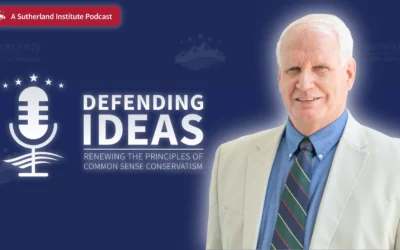
Written by William C. Duncan
September 30, 2022
A recent post here highlighted rankings of U.S. states in terms of religious freedom laws. The rankings, created by the Center for Religion, Culture and Democracy at the First Liberty Institute, ranked states based on whether the states had enacted specific laws protecting religious freedom.
The author of the study noted that there are limitations to understanding the climate of religious freedom in a state based solely on formal legislation.
What other factors could help us determine how a state is doing in terms of protecting religious freedom?
One could be whether the state has adopted laws or policies that affirmatively try to prevent religious freedom conflicts. For instance, the Alabama High School Athletic Association recently “updated its rules to accommodate religious requests following controversy over a group of students being compelled to choose between the tenets of their faith and a state basketball tournament.” The controversy came when
Oakwood Adventist Academy boys’ basketball team was forced to forfeit a 1A high school playoff game because of the team’s religious observance of the Sabbath, which began at sunset the day of the game. The team tried petitioning AHSAA to move the game to a different time, but the organization was unwilling to adjust.
After a challenge by the Becket Fund, a public interest law firm focused on helping preserve religious freedom, the Alabama Association wisely changed its rules.
Another indicator could be the actions of other branches of government like the courts as discussed in recent posts here.
A third indicator would be the climate of religious tolerance in the state. Even a state that has formal protections for religious freedom can have a negative culture for religious practice. Washington state has many formal safeguards, making it fifth in the nation in the rankings, but has seen serious conflicts recently, including two cases that were appealed to the U.S. Supreme Court, with the most recent decided last term.
There are probably other indicators as well. The main challenges for religious freedom now stem from a series of trends:
- The failure of legislatures and administrative agencies to act to eliminate potential conflicts between government actions and religious practice.
- Along with a decline in religious affiliation has come a decline in understanding of and appreciation for the importance of religious practice for individuals and society at large.
- Ignorance about the beliefs and practices of religious groups and people of faith.
- Increased government regulation in areas (like education) where religious groups have long been active – without taking into consideration the potential conflicts that such regulations may cause.
- The framing of religious freedom conflicts (by media, activists and political actors) as a zero-sum game where one side must lose for the other to be protected.
Better comprehension and protection of religious freedom will be enhanced by understanding the climate for religious freedom, both nationally and in the states, as well as the challenges faced in providing that protection.
More Insights
Read More
Protecting property rights against government overreach
While governments can continue to regulate land use, these regulations and fees must be justified by a government interest and proportional to the effect of the development’s impact on that interest.
Do we need to care about the Utah State Board of Education?
For any Utah voters who also feel like K-12 public education is headed in the wrong direction, learning about the candidates running for a seat on the Utah State Board of Education (USBE) is a wise choice this election season.
Defending education choice the right way
Education choice has exploded in popularity across the nation in recent years. So why does it remain a contentious point of debate in some parts of the country?


